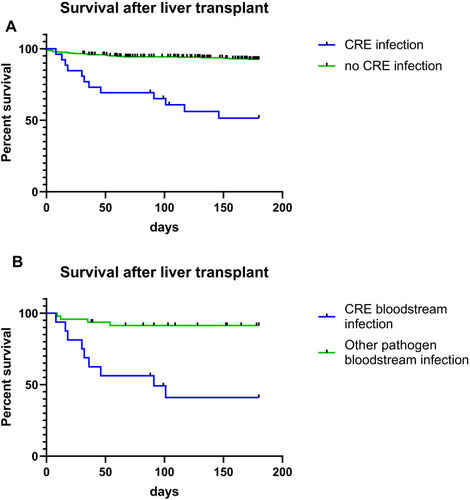Figures & data
Table 1 Comparison of Patients with and without CRE Infection Within 30 Days After Liver Transplantation
Table 2 Multivariate Analysis of Risk Factors for CRE Infection After Liver Transplantation
Figure 1 Survival rates associated with carbapenem-resistant Enterobacteriaceae (CRE) infections. (A) A Kaplan–Meier analysis demonstrated reduced 180-day survival for liver transplant (LT) recipients with CRE infections versus LT recipients without CRE infections (51.5% vs 92.4%, log-rank p<0.001). (B) A Kaplan–Meier analysis demonstrated reduced 180-day survival for LT recipients with CRE bloodstream infections versus LT recipients with other pathogen bloodstream infections (41.0% vs 91.4%, log-rank p<0.001).

